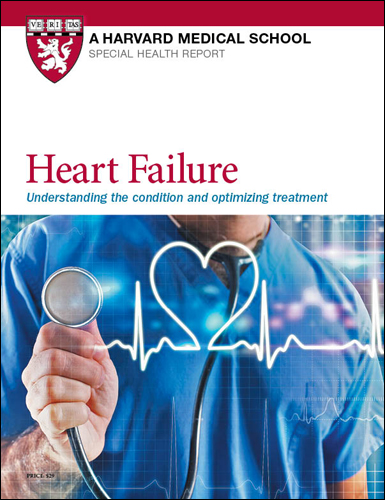Living with stable angina
Many people with heart disease have predictable episodes of chest discomfort. To treat this chronic problem, medications are almost always the best treatment.

Coronary artery disease, the most common type of heart disease, happens when the network of arteries that nourish the heart are narrowed by fatty and calcified plaque, a condition called atherosclerosis. The classic symptom — chest discomfort during physical exertion — is known as stable angina because it occurs in a predictable pattern.
As many as two-thirds of people with coronary artery disease have stable angina, which generally resolves with rest within a few minutes (see "What does angina feel like?"). For decades, cardiologists debated the best way to treat this problem: a procedure to reopen the artery (angioplasty and a stent) or optimal medical therapy. Optimal medical therapy means taking any medications you need to get your cholesterol, blood pressure, and blood sugar levels — the factors that underlie atherosclerosis risk — into a healthy range.
What does angina feel like?Derived from the Latin word angere (meaning to choke or strangle), angina is often defined simply as chest pain. But the sensation is more often described as discomfort rather than pain. Some say it feels like pressure or heaviness, while others describe it as a squeezing or burning sensation in the center of the chest. For some, the discomfort occurs in the left arm, shoulder, neck, or jaw. Stable angina occurs in response to exertion (such as brisk walking or climbing stairs) and in some cases emotional stress. It usually subsides within a few minutes with rest. In contrast, unstable angina occurs without warning, with only slight exertion or even when you're resting or sleeping. Angina that becomes more frequent, worsens, or lasts longer than usual is considered unstable and may signal a heart attack. If your symptoms don't get better within 10 minutes, call 911. |
Plaque: A puzzling problem
The rationale for doing angioplasty on people with stable angina came from a long-held assumption that turned out to be wrong. "Until about 30 years ago, the collective opinion was that atherosclerosis was an inexorable, progressive disease that would eventually block off one or more of the heart's arteries, causing a heart attack," says cardiologist Dr. William Boden, scientific director of the Clinical Trials Network of the VA New England Healthcare System and lecturer in medicine at Harvard Medical School.
Doctors now recognize that most heart attacks occur in arteries that are only about 30% to 40% blocked but harbor so-called vulnerable plaque that ruptures without warning. The resulting blood clot blocks blood flow, triggering a heart attack. It explains why people sometimes have heart attacks seemingly out of the blue, without any prior angina as a warning sign, says Dr. Boden. In fact, angina doesn't occur until a section of a coronary artery is blocked by at least 70%. "The heart has an incredible ability to adapt by widening the smaller arteries downstream from the narrowed section of the artery," Dr. Boden explains.
Why medications make more sense
The impulse to open a severely narrowed artery with angioplasty and a stent is understandable. But several major trials confirm that for people with stable angina, stents don't offer any advantage over optimal medical therapy when it comes to preventing heart attacks or death.
Medications help treat (and perhaps stabilize and even reverse) atherosclerosis in all the heart's arteries, whereas stents address only specific spots. Drug therapy is also less expensive and has fewer serious side effects. Three classes of drugs help relieve angina: beta blockers (which slow down the heart, lowering its demand for blood) and calcium-channel blockers and nitrates (which relax and widen blood vessels). But you can't necessarily expect improvement within days or even weeks, Dr. Boden cautions. Recent findings suggest that it can take three to six months before angina symptoms abate. "But the evidence is overwhelmingly consistent that most people treated with optimal medical therapy fare the best over time," says Dr. Boden.
Understandably, people with stable angina worry about having a fatal heart attack. But studies show that the risk is low — only about 0.4% per year in people who are careful to address all their risk factors. That means not smoking, eating a healthy diet with plenty of plant-based foods, getting regular exercise, and managing stress, in addition to taking the right combination and doses of medicines.
Image: © LaylaBird/Getty Images
About the Author

Julie Corliss, Executive Editor, Harvard Heart Letter
Disclaimer:
As a service to our readers, Harvard Health Publishing provides access to our library of archived content. Please note the date of last review or update on all articles.
No content on this site, regardless of date, should ever be used as a substitute for direct medical advice from your doctor or other qualified clinician.
















